Retail Makeover: Building a Fresh New Look
Are you ready to be among the ranks of swanky, upscale depart-ment stores? This season, make it a priority to keep key endcaps and island displays filled to the brim with new and exciting plants and hard goods. To do so, you must routinely change these important retail areas. We are now in the experience economy era, meaning that just having goods and services for sale is not enough. The customer is seeking a memorable and exciting shopping event. One way major department stores and retail outlets embrace the experience-based economy is by creating a new experience for the customer every time they shop, whether it is every week or every couple of months.
You have the ability to do the same at your retail establishment. This can be achieved by displaying the newest garden gadgets or repositioning a product that’s not receiving enough attention. We know value-added products are popular merchandising items, but think about spicing up the entire display. This article is all about creating the value-added display.
Temporary And Fixed Displays
Start by dividing your store up by department. Within all of these departments, identify five or six areas where temporary displays can be changed around on a regular basis. However, try not to move around your whole store each week, just a handful of areas will accomplish the task. You will begin to notice the main layout of the store remains the same, yet select areas are in constant change.
After committing to a few temporary displays, create a buying plan to accommodate these displays. This includes looking for hot buys and good deals on items at trade shows where you are confident in ordering a large quantity of goods to make a bold statement in one of your temporary displays. An example could be featuring small impulse items at a low price point to fill a display. Or select an item to highlight an upcoming holiday like Mother’s Day or Memorial Day. Also, if you plan ahead, grow or buy in a special crop to sell for a limited time only. Your customers will be left with the impression that every time they shop your store they will always see something new, which creates a sense of excitement to stop in and shop frequently.
Find The Tools
Once you have designated this season’s temporary and fixed display locations, start acquiring the building blocks to make it easy and fun to switch around and create new displays. It can be intimidating to merchandise a whole store; however, the right tools will make your job much easier.
Great shelving units and display pieces don’t have to cost a fortune, many can be found at local flea markets and garage sales. For example, look for apple crates, bushel baskets, whiskey barrels, metal washtubs, wheelbarrows, potting benches and children’s wagons. In addition to these “antique and unique” items, seek and accept free display offers when ordering retail goods. These value-added tools work nicely to create the retail display skeleton. Also, this approach will give you a way to show off products at different display tiers and on something other than a plain rack. If you are going for a fancier look, drape the display in fabric to help the products stand out. Also, don’t be afraid to bring out the paint painting display pieces in the season’s hot colors is sure to attract attention.
Merchandising Challenges
Unfortunately, not all of your products can be displayed on a shelf or ledge. Remember to design and establish display space for your hanging and wall products as well. This can be challenging to do because of the “openness” of a garden center.
Retail structures that can make hanging products sell include wooden or plastic lattice, fence sections, wooden ladders or large picture frames. Not only is lattice handy to cover a section of wall space, it can also be hung from the ceiling to support lightweight and pendulant products. With a few hinges, wooden fence sections can be created into a tri-fold to display items, divide retail areas or be used as a backdrop. Wooden ladders can be incorporated into garden tool displays and used to show off different accessories, like gardening gloves or watering wands.
Large picture frames hung from the ceiling with a beautiful hanging basket within can help to show off some of your picturesque creations. Also, if you are selling arbors, they can double as clever displays for wind chimes or birdfeeders and look great as endcaps. Decorative garden stakes or signs can be difficult to merchandise as well if they are not accompanied with a display rack. One solution is to fill large containers with mulch or sand and create “bouquets” of these decorative gardening stakes in these containers.
Another challenge with today’s “warehouse look” of the garden center is creating different display “rooms.” For example, look at your pond supply area. Try draping blue fabric or actual fish netting along the ceiling over the area in a scalloped affect. This will enhance the area by creating inviting nooks while also providing shade for your customers and product packaging, which can easily fade in the sunlight.
Another idea is to construct more permanent pieces like a gazebo or a mock deck to display outdoor furniture and container gardens. A simple porch overhang over a wall-shelving unit is a great way to provide shade for your customers along with the products you are displaying. This can be assembled easily and inexpensively using rough-cut lumber and tin barn roofing. Having these small, consumer-enticing areas of shade serve as destinations in your garden center and make for nice retreats for customers to browse in and to escape the hot sun, which makes for a more comfortable buying atmosphere.
Take Risks/Have Fun
Merchandising is more of an art than a science. There are few rules, and the rules can easily be broken. Try not to approach this job as a chore, rather an opportunity to be creative and add personality to your garden center. Keep in mind you are selling the experience just as much as the goods and services. You want your store to be memorable, so try and appeal to all of your customer’s senses. Try adding music to your displays as well. This could be the sound of the rainforest in your tropical plant department or relaxing jazz around your outdoor furniture. Also, you can appeal to their sense of touch and sight by providing samples of the different bagged soils and mulches you offer. Hopefully a few of these ideas get your creative juices flowing so your season will be fun filled for both you and your customers.

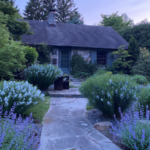
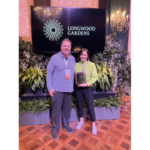
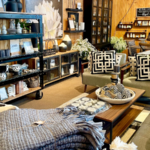


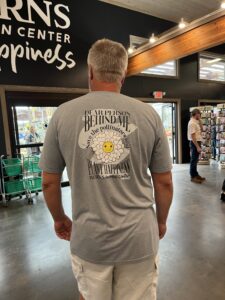
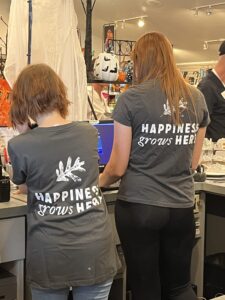
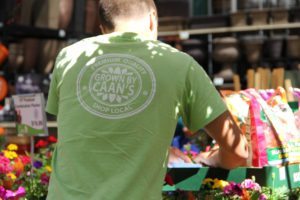

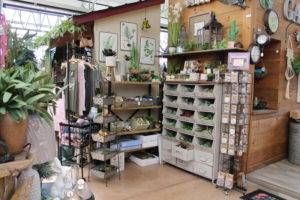
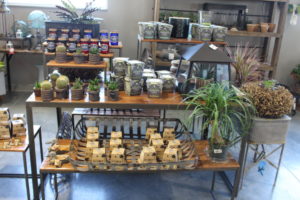
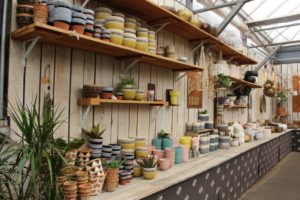
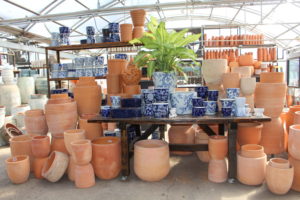
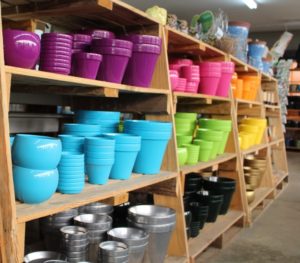
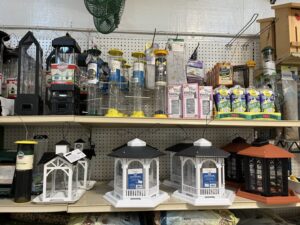


 Videos
Videos





